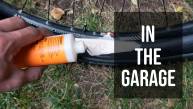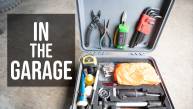
I get it. Mountain biking is expensive. Like really, really, expensive. And in all honesty, unless you have the money, it’s really not worth buying a brand-new bike. Like a car, it’ll lose a good bunch of its value immediately (not that it matters, since the value truly comes from the fun times you and the bike get out on the trail). That being said, if you look in the right places, you’re more than likely to find a fully-capable used bike for a good bit less than a new one. Or better yet, you’ll be able to buy a nicer bike for the same amount as a so-so new one.
Buying used mountain bike gear can be a bit intimidating, since there’s so many moving parts, it’s hard to tell the condition of something, and how do you even trust a stranger you’re potentially giving hundreds or even thousands of dollars to? Here’s some advice on how to go about navigating the used bike market.
In terms of other used gear, my advice varies. NEVER buy a used helmet. You cannot guarantee it’s safe anymore. Used apparel or softgoods are up to you. If it smells, not worth it. If it looks new, go for it.
Where do I look?
We live in the 21st century, so use the internet to your advantage. In North America, perhaps the best place to look for a used mountain bike are online buy/sell pages. Check out either the tetongravity.com forums, the Pinkbike.com buy/sell page, Facebook Marketplace, Craiglist, or KSL. There are thousands of bikes listed on these pages, so now it’s time to filter.
What do I want?
Most importantly, set yourself a budget. How much are you willing to spend? What are some compromises that might make you want to spend a little more?
Secondly, ask yourself about the kind of riding you plan on doing. Are you an experienced rider looking for a fresh bike to upgrade your aging steed? Are you a new rider intrigued by tales of epic singletrack? Are you looking to buy a second bike to add to the collection for a new style of riding?
Answering those questions honestly should narrow down your search. If you set a budget of $2000, decide you want a lightweight trail bike but don’t want to pay for shipping, use those parameters to filter your results.
How do I decide?
Even after narrowing down your search results, you’ll still likely be caught between a few different options. Now the fun begins. If at all possible, I always recommend buying a bike in person. I cannot stress this enough. The internet is full of shady sh*t, and odds are you’ll get scammed. It’s happened to me, and it could easily happen to you. You’ll get a chance to ride the bike, inspect it for any damage, and maybe even cut a deal with the seller.
Yeah, I know it’s weird during COVID-19 times, but I’ll let you figure that part out on your own.
How do I know it’s not broken?
Your single biggest concern is whether the frame is cracked, particular when it comes to more aggressive mountain bikes. Do a thorough inspection of the frame and look for anything weird in high-risk places like the bottom bracket shell, chainstays, and bottom of the down tube. Cycle the suspension and make sure it’s smooth, and doesn’t have any slop (a tell-tale sign that the bearings will need to be replaced).
Buying a used carbon frame is fine, just pay extra attention to cracks. It helps to ask the seller where they liked to ride it? “I only rode bike park” tends to be a red flag, whereas “I mostly rode the trails around my house, and the local bike shop did all the work,” is often a good sign.
If there’s any damage in sight, I’d suggest thanking the seller for their time and looking for a different option.
Assuming the frame is in good shape, what else should I look out for?
You’ll want to see what components are on the bike and figure out what’s going on with the build kit. Has the seller upgraded parts? Has the seller been good about maintaining things like the brakes, drivetrain, and suspension?
In terms of specific parts, if you plan on riding aggressively, I would make sure the suspension and brakes are up to par – you don’t want to be riding XC-level brakes and squishy bits if you plan on hitting jumps and steep tech all day long. I’m talking you’ll want 4-piston brakes (like Sram’s Guide or Code series, or Shimano’s XT/XTR 4-piston brakes) and suspension parts with some heft. Make sure the brake pads have enough life left in them, or else you’ll be spending extra money there too.
That goes the other way too, if you only plan on riding mellow XC trails, there’s no need to heavy duty components as they’ll only weigh you down.
For drivetrain duty, check that everything shifts smoothly and the chain, cassette, and derailleur isn’t too worn out (easy to replace, but will cost you money).
Finally, make sure the tires are in good shape. I’ve seen too many used bikes where the seller simply slaps a pair of ancient tires on and calls it good. A used tire is fine, just make sure the rubber isn’t cracking, there’s enough tread (particular on the rear tire), and that there’s no punctures.
What’s an appropriate price?
Used mountain bikes are often quite overpriced, so be judicious in what you spend your money on. In my opinion, a bike that’s over three years old and has been ridden hard should never cost more than 50 percent of its original price. If I’m looking for a high-end 2018 or newer enduro bike, I’d be willing to spend $4,000 on it. How about an entry-level 2016ish trail bike? No more than $2,000. Anything older than that, and it’s likely not worth spending the money. Do your research and compare your options, and know that money can indeed buy happiness when it comes to bikes.
That being said, if you find the unicorn of a bike that has lots of (useful) upgrades, is from a reputable buyer, and promises years of fun down the road, pull the trigger. After all, the reward is you get to ride a sick new bike.












